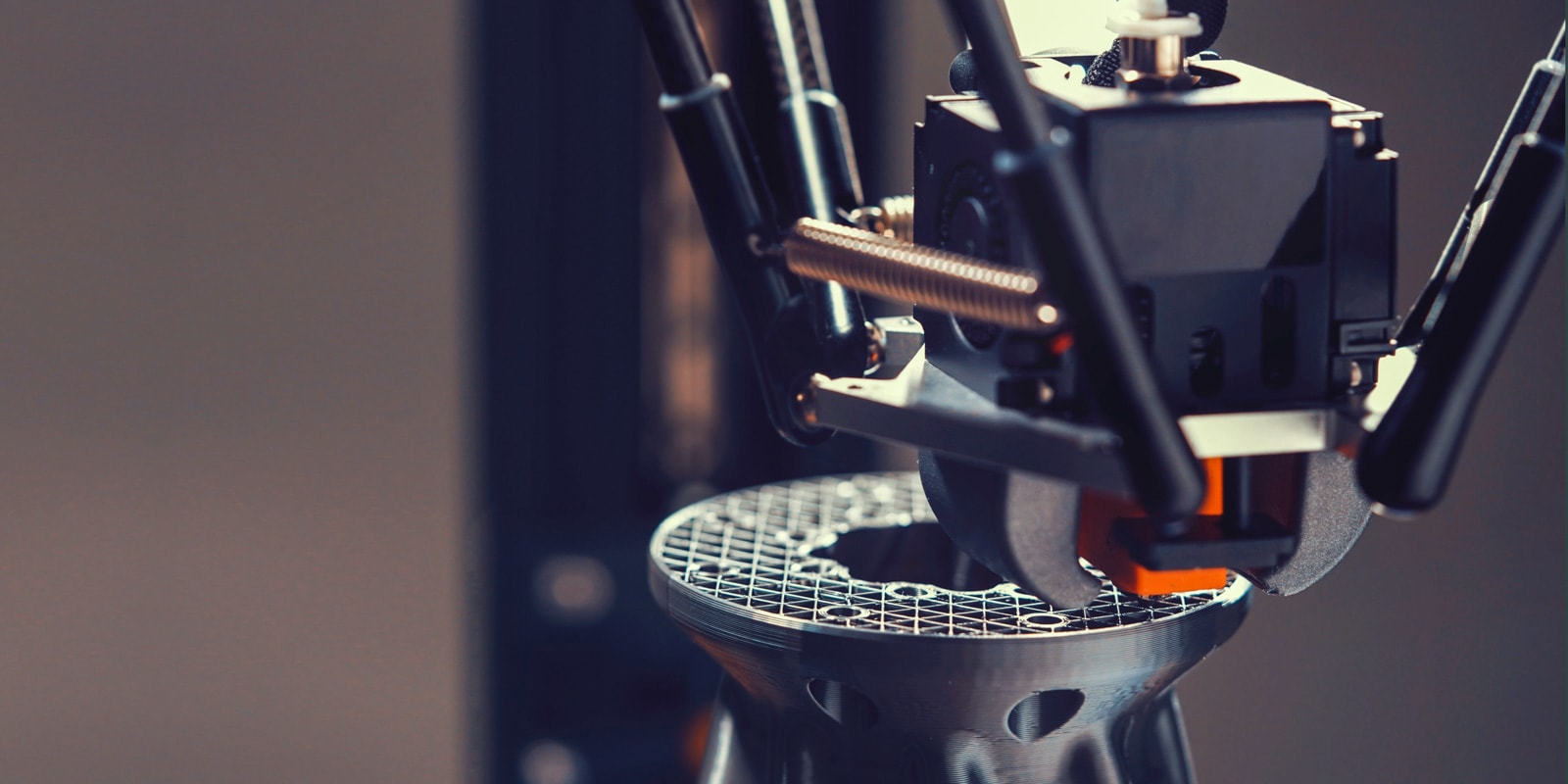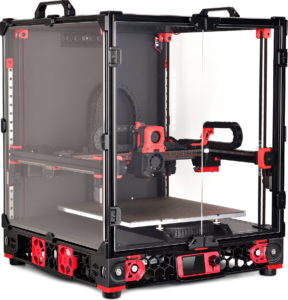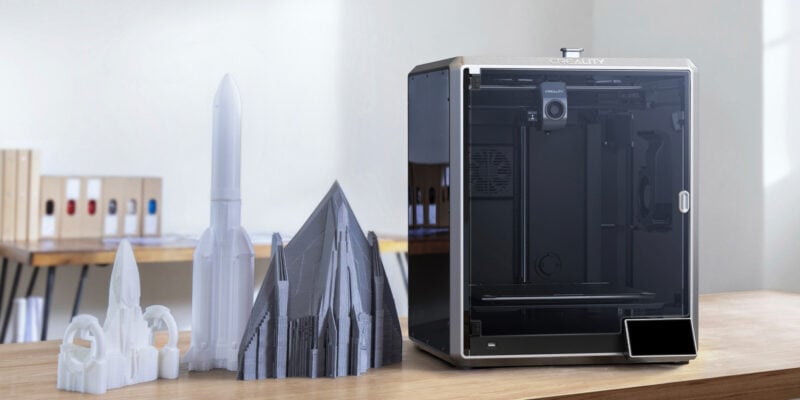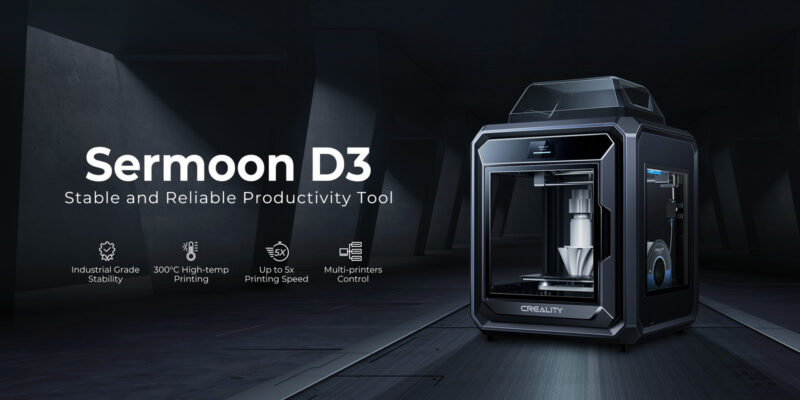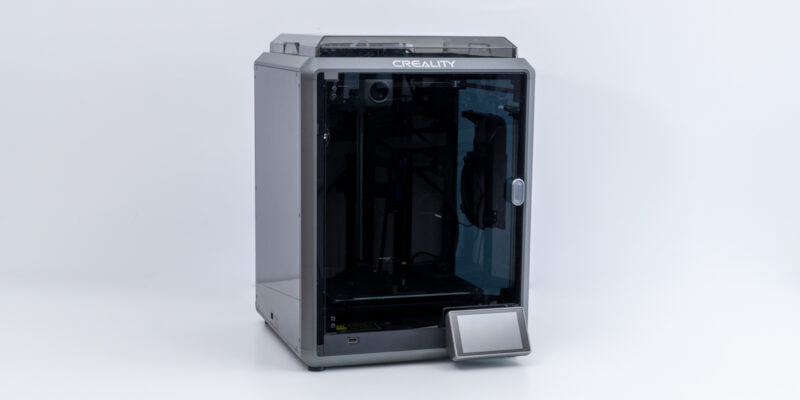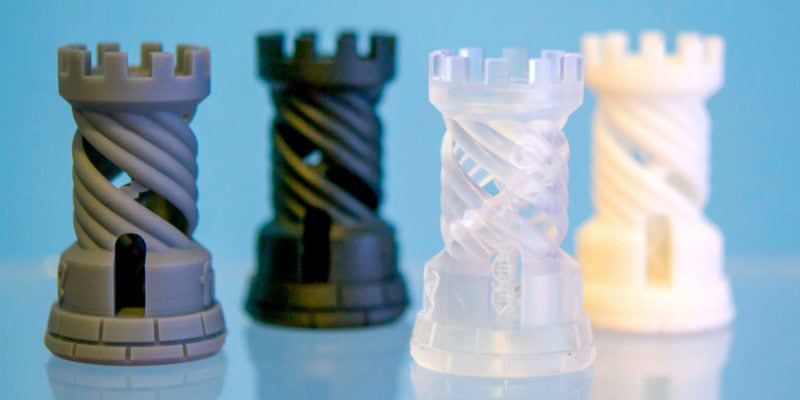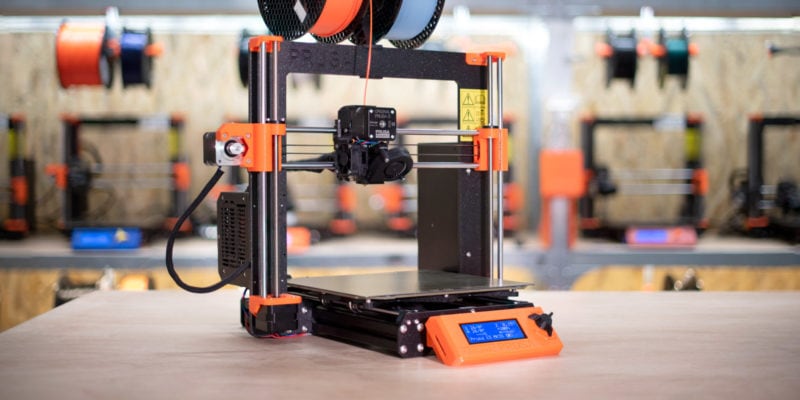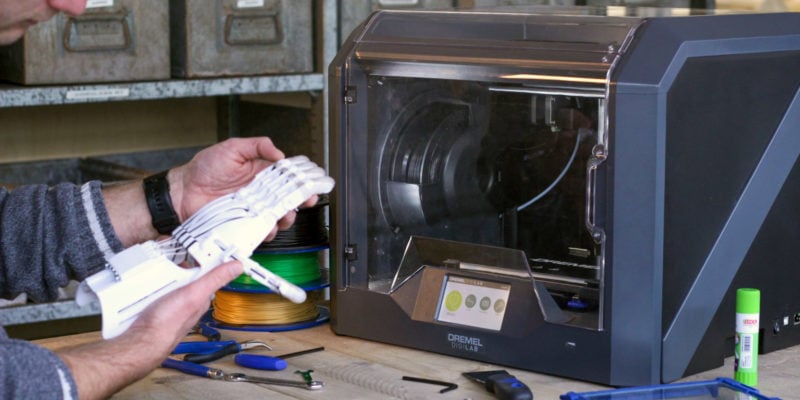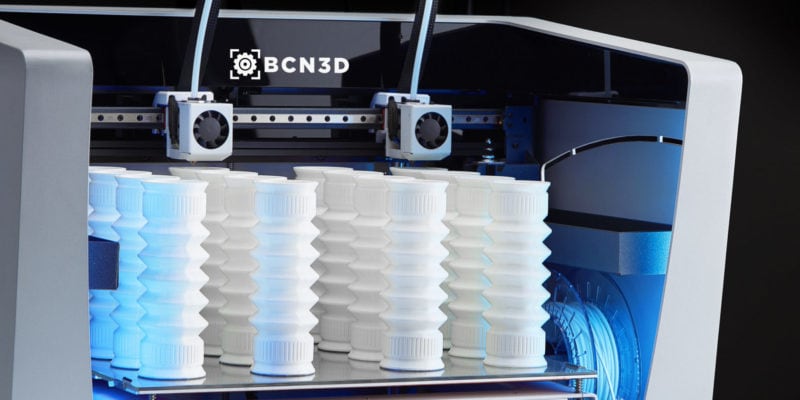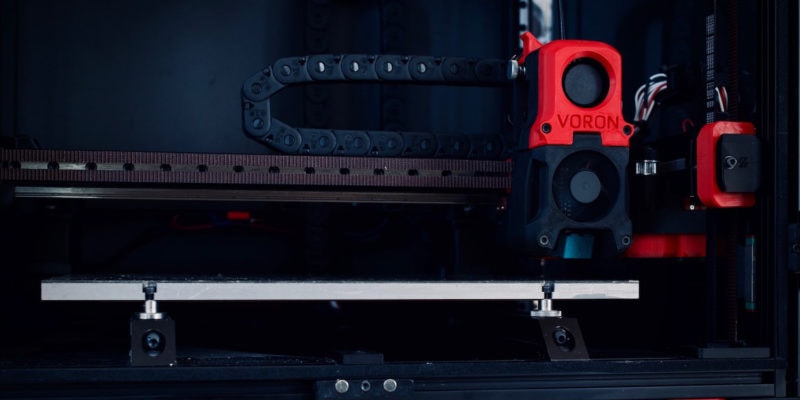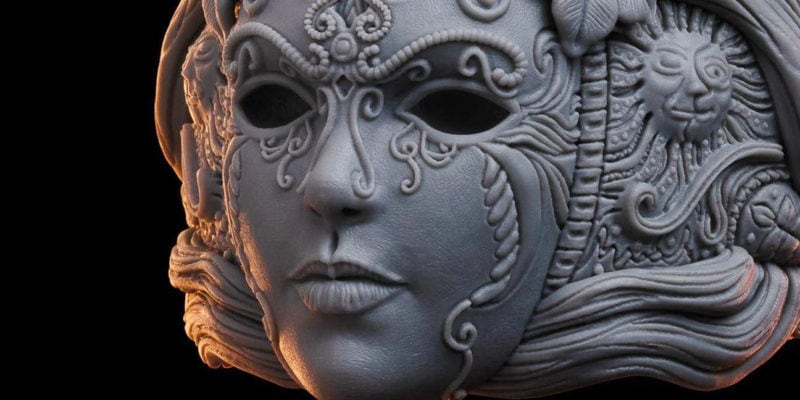Fast 3D printers have taken the 3D printing world by storm. You have printers hitting 200, 300, and 600 mm/s printing speeds without sacrificing much print quality.
We remember one of the first 3D printers to make these fast printing waves—the Voron. Well, technically, it still does. The latest Voron 2.4 impresses us and tops the list with its fast speeds, build quality, and superb print quality. However, the Voron line was just the beginning.
In this comparison guide, we’ll show you seven other machines that break through the speed limits of 3D printing. We will guide you through the features and benefits of these fast 3D printers to help you choose the fastest one for your needs.
Read on to discover which printers lead the race!
| Fast 3D Printer | Max. Speed | Build Vol. | Price (~) | Best Offer |
|---|---|---|---|---|
| Voron 2.4 | 250 mm/s | 350 x 350 x 350 mm | $855 | |
| Sovol SV07 | 250 mm/s | 220 x 220 x 250 mm | $269 | |
| Creality K1 | 600 mm/s | 220 x 220 x 250 mm | $599 | |
| Prusa MK4 | N/A | 250 x 210 x 220 mm | $1099 | |
| Voron 0.2 | 250 mm/s | 120 x 120 x 120 mm | $449+ | |
| FLSUN SR Super Racer | 200 mm/s | Ø 260 x 330 mm | $499 | |
| Original Prusa XL | N/A | 360 x 360 x 360 mm | $1999 | |
| Phrozen Sonic Mini 4K | 80 mm/hr | 134 x 75 x 130 mm | $299 |
What Constitutes a Fast 3D Printer?
There’s no absolute definition for what constitutes a fast 3D printer. For our purposes, we’ll use 150 mm/s (for an FDM machine) as the baseline.
Average 3D printers print at approximately 50-80 mm/s speeds. While you can print at higher rates, print quality often degrades too far for the prints to be appealing and dimensionally accurate.
You’ll find that most of the fastest 3D printers are CoreXY or Delta 3D printers. Standard open-frame 3D printers can’t reliably achieve high speeds because of the flexibility of their frame. Component quality and design are factors as well.
Why Buy a Fast 3D Printer?
The most significant advantage of using a fast 3D printer is the time savings you can achieve. This time saving may not be apparent in small 3D prints, but when you’re 3D printing massive models on large 3D printers or using them for mass production, a speed difference of even 30-40 mm/s can reduce your printing times by hours.
Fast 3D printers especially benefit you if you’re trying to make money with a 3D printer. If you’re operating a 3D printing business or a printing firm, you can maximize your profits by printing models in a shorter time. A faster 3D printing speed also helps you reduce your electricity and labor costs.
The Fastest 3D Printers in 2024
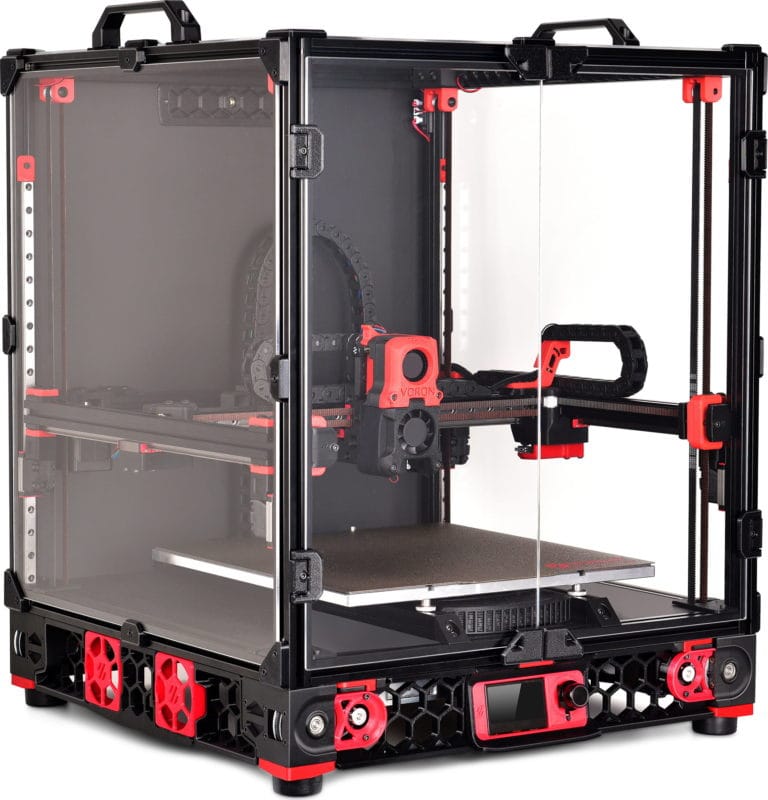
Voron 3D printers are an excellent example of open-source, high-end 3D printers that are well-built and equipped with quality components—provided you source your kit from a reputable seller. The Voron 2.4 is the current flagship 3D printer by Voron design, built for serious 3D printer users and hobbyists alike.
You can choose to print the plastic parts for the Voron, or you can choose a pre-made kit. Regardless, you can print at speeds of up to 250 mm/s, with optimal results in the 100-150 mm/s range.
The Voron’s CoreXY motion system enables the printer to have fewer moving parts. In combination with its linear rail motion system, sturdy metal frame, and quality design, you can print faster while maintaining quality.
The Voron 2.4 kit is enclosed on all four sides and comes with an adjustable PEI-coated print bed and a Titanium alloy all-metal 3D printer hot end. These features expand Voron’s material compatibility, letting you print with higher-temperature materials.
Overall, the Voron 2.4 is one of the fastest 3D printers for under $1000 that delivers a consistent, high-speed performance. It provides excellent value to 3D printing businesses and farms that require fast speeds and minimal turnaround times.
Standout Features
- Open-source design
- Scalable print volume
- Premium quality components
Technical Details |
|
|---|---|
| Build volume | 350 x 350 x 350 mm |
| Max. nozzle temperature | 300 °C |
| Max bed temperature | 110 °C |
| Max print speed | 250 mm/s |
| Filament compatibility | PLA, ABS, PVA, HIPS, PETG, TPU, Nylon, PC, Carbon Fiber |
| Connectivity | SD card, USB |
What We Like
- Excellent features for its price
- Fully enclosed design
- Wide community support
- You can customize parts as per your needs
Could Be Better
- Limited kit availability
- DIY build, not for beginners
A Klipper 3D printer under $300? Seems like a steal, doesn’t it? Well, the Sovol SV07 is precisely that, albeit with some considerations.
The Sovol SV07 is an upgrade from the Sovol SV06 3D printer and offers good Klipper integration out of the box. It uses several of Klipper’s features like resonance compensation and pressure advance and can achieve a top print speed up to 250 mm/s.
This means a 3D Benchy print that takes 70-100 minutes on normal 3D printers can be done in under 30 minutes on the SV07. Not bad for a bed slinger!
We found the automatic bed leveling system also works as expected and adds more value to this budget 3D printer. The 300 °C high-flow hot end is another plus and goes very well with the fast speeds of the machine. It lets you 3D print high-temperature materials like ASA, ABS, PETG, even though for some of those it is a good idea to use an enclosure.
In our SV07 review we found that its subpar component quality and extensive calibration requirements were the main shortcomings. Then again, it is a budget printer. If you have experience with 3D printing, these issues can be dealt with.
The Sovol SV07 is not a perfect 3D printer by any means, but it still offers plenty for its price. We’d suggest this machine to anyone who’s on a budget and wants to try their hands on a Klipper 3D printer.
Standout Features
- Double-sided PEI print sheet
- 300 °C Volcano style hot end
- Triple fan cooling
- 5" KlipperScreen Display
Technical Details |
|
|---|---|
| Build volume | 220 x 220 x 250 mm |
| Max. nozzle temperature | 300 °C |
| Max bed temperature | 100 °C |
| Max print speed | 250 mm/s |
| Filament compatibility | PLA, ABS, PVA, HIPS, PETG, TPU, Nylon, PC |
| Connectivity | USB, WiFi |
What We Like
- Budget-friendly pricing
- Full Klipper experience
- Excellent bed adhesion
- LED lighting near the nozzle
Could Be Better
- Needs thorough calibration for best results
- Quality control seemed poor on our unit
- Documentation feels outdated
The K1 3D printer is Creality’s latest entry into fast 3D printing. With top speeds of 600 mm/s, this printer can go fast and boost your 3D printing productivity.
During our testing of the K1, we discovered that the optimal print speed range for balancing print quality and speed is around 300 mm/s. This is much faster than most printers and significantly reduces your print times. At 600 mm/s print quality suffers, but you can still use these speeds for non-cosmetic parts.
The new bed leveling system on the K1 is practical as well. It uses strain gauges on all four corners of the print bed. It allows the 3D printer to know when the nozzle touches the bed. With this information, it uses the nozzle itself to probe the bed at many points. The result: perfectly leveled first layers without the use of a dedicated bed leveling sensor.
Other notable features of the K1 include the new extruder and hot end. While the first generation of these components had issues, this has been resolved in the current version of the 3D printer. The extruder and hot end form a powerful team capable of pushing all kinds of 3D printer filaments at high speeds without extrusion problems.
However, the software experience and some of the design elements, like the filament pathway and the CoreXY implementation, could be improved. In case you are curious, you can read more about these in our Creality K1 review.
At its current price point, the Creality K1 offers a lot of value. Its features are comparable to and even better than some of its more expensive competitors. If you are looking for a fast 3D printer and are willing to overlook its shortcomings, the K1 is a good deal in today’s market.
Standout Features
- Blisteringly fast print speeds
- Hands-free auto leveling
- High flow hot end
Technical Details |
|
|---|---|
| Build volume | 220 x 220 x 250 mm |
| Max. nozzle temperature | 300 °C |
| Max bed temperature | 100 °C |
| Max print speed | 600 mm/s |
| Filament compatibility | PLA, ABS, PVA, HIPS, PETG, TPU, Nylon, PC, Carbon Fiber |
| Connectivity | USB, WiFi |
What We Like
- Solid construction
- Up to 600 mm/s print speeds
- Optional camera and LIDAR accessories
- Nozzle heats up fast
- Printer can self-diagnose issues
Could Be Better
- Filament path is poorly designed
- Imperfect CoreXY implementation
- No airfilter

Better late than never! The Prusa MK4 has been a long time coming and is now finally available for everyone to 3D print with. It boasts the best features the Prusa team has to offer and stands out among fast 3D printers.
Although it has a similar design to the Prusa MK3, there are significant upgrades. For example, the MK4 now comes with a color LCD screen with an intuitive user interface that meets current 3D printing standards.
The newly designed ‘Nextruder’ outputs consistent print quality and supports fast print speeds well. The Prusa team has demonstrated that the MK4 can print at astonishing speeds, even completing a Benchy boat in under 20 minutes.
The quick swap nozzles and load cell sensor in the hot end are also firsts for Prusa printers—even though they were announced previously for the PrusaXL. Regardless, they help improve the user experience of the MK4 and are welcome additions.
The printer, however, falls short when compared with similarly priced competitors. It lacks a camera and touchscreen, and the build volume is limited in comparison. The price is also on the higher side, even though you can typically expect higher build quality from Prusa.
The print quality stands out, however, and the MK4 is a workhorse like its predecessors. If you favor the ecosystem and reliability of Prusa printers and have the budget, the MK4 is a good investment for your 3D printing hobby or business.
Standout Features
- Nextruder with breakout board
- Quick-swap nozzles
- Load-cell sensor auto-leveling
Technical Details |
|
|---|---|
| Build volume | 250 x 210 x 220 mm |
| Max. nozzle temperature | 290 °C |
| Max bed temperature | 120 °C |
| Max print speed | N/A |
| Filament compatibility | PLA, PETG, ABS, ASA, Flex, HIPS, PA, PVA, PC, PP, CPE. PVB, NGEN, |
| Connectivity | USB, Wi-Fi, Ethernet |
What We Like
- Reliable build quality and components
- Excellent print quality
- Seamlessly integrates with Prusa ecosystem
- Vast and helpful community
Could Be Better
- Demanding price compared to competition
- Long shipping times
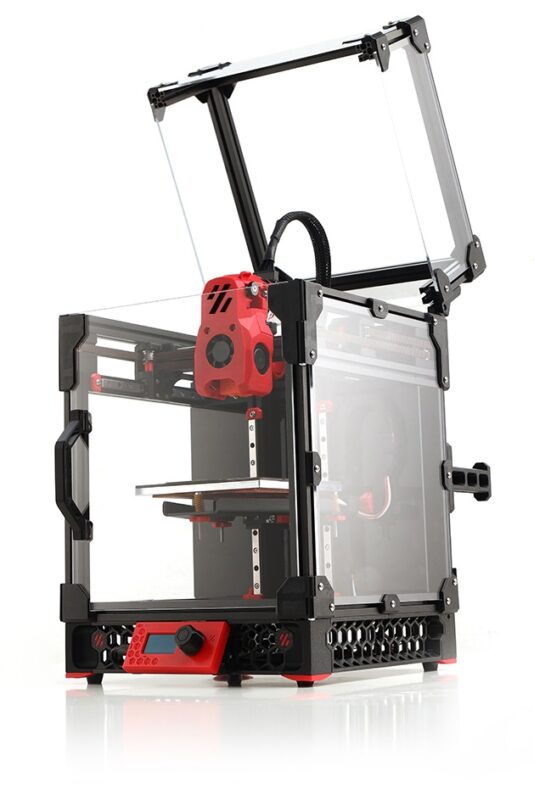
Sometimes you just want a compact, fast print speed 3D printer for small prints. A printer that does not sacrifice the print quality with a large build size. This is where the Voron 0.2 3D printer steps in.
This second-generation Voron printer is well-designed and assembled from quality components. Although it comes as a kit that requires assembly and calibration, the results are worth the effort for many.
The Voron 0.2 has linear rails on the X and Y axis, which both improve its structural strength and reduce play. It also features Gates belts and high-speed Moons’ motors that contribute to its impressive performance. With print speeds of up to 250 mm/s and exceptional build quality, this printer is a reliable performer.
The kit now comes with an upgraded BigtreetechPi board developed in conjunction with BigtreeTech and Klipper. This helps with a more seamless printing experience and addresses the Raspberry Pi board shortage concerns.
The Voron 0.2 is a performance-oriented 3D printer with a full enclosure, high-temperature hot end, heated print bed, and Klipper firmware. If you enjoy tinkering and only want a small, reliable 3D printer, the Voron 0.2 is an excellent choice at a reasonable price. It’s a must-have addition to any hobbyist’s 3D printer collection.
Standout Features
- Fully open-source
- Premium quality components
- New Bigtreetech Pi controller
Technical Details |
|
|---|---|
| Build volume | 120 x 120 x 120 mm |
| Max. nozzle temperature | 300 °C |
| Max bed temperature | 110 °C |
| Max print speed | 250 mm/s |
| Filament compatibility | PLA, ABS, PVA, HIPS, PETG, TPU, Nylon, PC, Carbon Fiber |
| Connectivity | WiFi, Ethernet, USB |
What We Like
- Plenty of configuration options
- Relatively easy to assemble
- Fully enclosed design
- Impressive print speeds and quality
Could Be Better
- Not ideal for beginners
- Kit might require additional 3D printed parts
With speed being its primary selling point, the FLSUN SR Super Racer is known as one of the fastest 3D printers in the delta 3D printers category. It has a generous build volume of Ø 260 x 330 mm and a rated top speed of 200 mm/s. Realistically though, to print objects of high quality, speed settings of 100-150 mm/s will yield the best results.
To achieve such high-print speeds, the printer includes a 32-bit 3D printer controller. The faster processor delivers a high computing speed, which leads to precise printer movement even at high rates. And to avoid unwanted vibrations of stepper motors at such speeds, FLSUN has included Trinamic’s TMC 2209 silent stepper drivers.
The linear rails on all three axes deliver a smooth motion and give rigidity to the printer’s frame while printing at high speeds. This helps to minimize vibrations and reduce ghosting and ringing artifacts in your prints.
Additionally, you get automatic bed leveling and a giant touchscreen with an easy-to-use UI. The printer has almost no drawbacks, and the Super Racer offers excellent value for your money.
The printer comes almost 90% pre-assembled, and you can start printing on it within just a few minutes.
Standout Features
- Automatic bed leveling
- High-quality linear rails
- 30 mins easy assembly
Technical Details |
|
|---|---|
| Build volume | Ø 260 x 330 mm |
| Max. nozzle temperature | 260 °C |
| Max bed temperature | 100 °C |
| Max print speed | 200 mm/s |
| Filament compatibility | PLA, ABS, PETG |
| Connectivity | SD card, USB |
What We Like
- Generous print volume
- Fast and silent 3D printing
- Easy to position touchscreen
- Bondtech style dual drive extruder
Could Be Better
- Limited material compatibility
- Sub-par print quality right out of the box
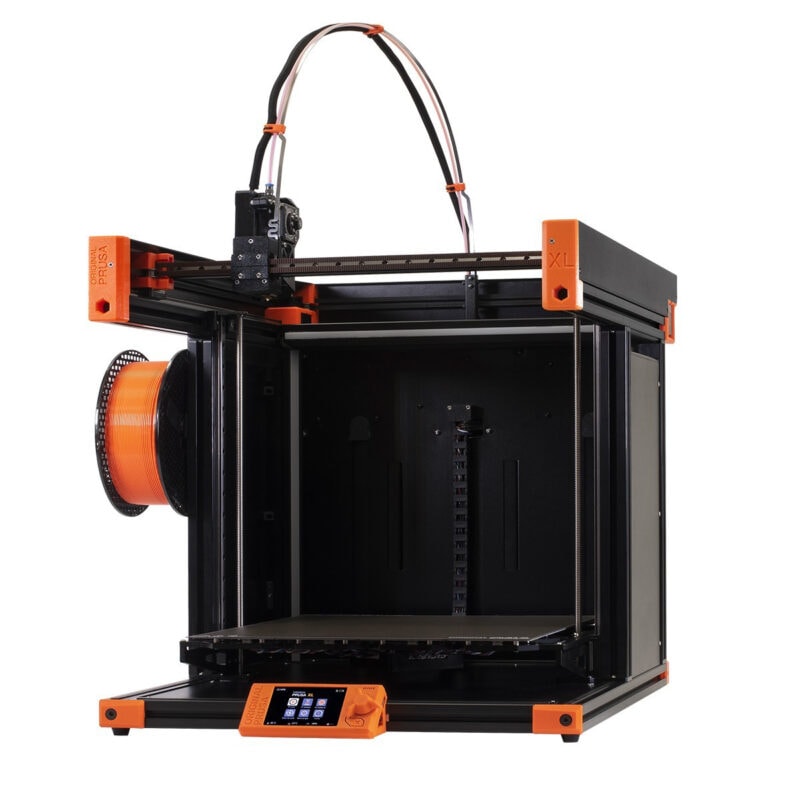
Prusa3D finally entered the CoreXY 3D printer category with its latest Prusa XL printer. They first showcased the printer at the Formnext event in November 2021. The machine caused a buzz owing to its revolutionary new design and several advanced features that are firsts in the consumer 3D printer category.
While Prusa has not revealed the maximum 3D printing speed, the CoreXY structure, coupled with a Klipper firmware integration, is a good indicator that the XL will probably be one of the fastest 3D printers. Other features such as 360 x 360 x 360 mm large print volume and a redesigned lightweight ‘Nextruder’ are also evident indicators of the XL’s fast printing speeds.
The XL is equipped with a 32-bit motherboard (a first in a Prusa 3D printer) to compute the printer’s movements for high-speed printing. Additionally, the linear rails on all three axes give the printer a rigid frame structure and precise motion.
One of the unique features of the XL is its tool changer system. You can load up to five different materials or tool heads simultaneously, and this feature will let you execute multi-material 3D printing and combine other manufacturing methods such as laser cutting, CNC, and 3D printing.
But, the PrusaXL is still in its pre-order stage and users are yet to receive their first units. Considering its unique offerings and the reputable brand name of Prusa, there’s a lot of excitement for Prusa XL. If you’re a professional, a serious hobbyist, or a Prusa enthusiast, you should keep an eye out for the XL.
Standout Features
- Klipper Firmware
- High-performance "Nextruder"
- Modular print bed
Technical Details |
|
|---|---|
| Build volume | 360 x 360 x 360 mm |
| Max. nozzle temperature | N/A |
| Max bed temperature | N/A |
| Max print speed | N/A |
| Filament compatibility | PLA, PETG, ABS, TPU, ASA, etc. |
| Connectivity | Ethernet, SD Card |
What We Like
- Massive print volume
- 32-bit electronics with Klipper
- Tool-changing capabilities
- Flexible and modular design
- Uses high-torque cycloidal gear extruder
Could Be Better
- Still in pre-order stage
- No information about quality and user experience
The Phrozen Sonic Mini 4K is a power-packed unit with excellent specifications in a small package. It is one of the highest-resolution resin 3D printers available currently that can print an entire layer in barely two seconds.
Phrozen claims the printer’s top 3D printing speed to be around 80 mm/hr. This speed is possible due to the use of a 4K monochrome display, which can cure print layers up to 4 times faster than a conventional RGB LCD screen. The small print size, coupled with a 4K screen, results in a 0.035 mm XY resolution, giving you the sharpest-looking resin prints.
Its build quality is top-notch, with linear rails on the Z-axis. Phrozen has recently updated the Mini 4K with a T-plate system to enhance the printer’s stability further while printing large models. Additionally, the printer is compatible with the Chitubox and Lychee slicers and is extremely easy to use, thanks to its simple touchscreen UI.
Including a HEPA air filter and some more connectivity options would’ve made the Mini 4K a perfect budget resin 3D printer.
Even so, Phrozen has delivered a superb resin 3D printer that you can use to print high-quality models at faster print speeds. For a budget of $400.00, the Phrozen Sonic Mini 4K is worth its price. It is ideal for hobbyists that can benefit from the resin printers’ high print quality.
Standout Features
- Monochrome LCD Screen
- 4K resolution
- Excellent build quality
Technical Details |
|
|---|---|
| Build volume | 134 x 75 x 130 mm |
| XY resolution | 35 µm (0.035 mm) |
| Layer Thickness | 0.01 - 0.30 mm |
| Max print speed | 80 mm/hr |
| Material | 405 nm UV resin |
| Connectivity | USB |
What We Like
- Sharp details and edge reproduction
- Easy to use
- Compatible with 3rd party resin
- Uses linear rails for smooth motion
Could Be Better
- Small print area
- No air filter
What to Look for in the Fastest 3D Printer
Printing Technology
Cartesian, CoreXY, and Delta 3D printers are the three motion systems used in the Fused Deposition Modeling (FDM) 3D printing process. Cartesian 3D printers have one of the most straightforward designs, with a print head that moves in X and Z directions, while the print bed is responsible for the Y-axis movement.
In CoreXY printers, you have a vertically moving print bed with a lightweight extruder setup. The X- and Y-stepper motors are mounted on the frame of the 3D printer itself, reducing moving mass and increasing the 3D printing speed. The boxy frame of a CoreXY printer also increases structural rigidity and makes it easy to enclose the entire print area.
Delta 3D printers have a stationary build plate with a featherweight printhead. These printers use a complex motion system in which three connector arms move in sync with each other to move the print head. Delta 3D printers are some of the fastest 3D printers and reaching speeds of 150 mm/s or higher is not out of the question.
Print Volume
Make sure the printer you choose has a print volume that meets your needs. Regardless of the motion system you choose, you want to make sure the printer can handle the size of the model you are trying to print. Some 3D printers come in various configurations, letting you choose the size of the build area.
For example, the Voron 2.4 kit comes in three different print volumes. You can choose a modest 250 x 250 mm area or a bigger 350 x 350 mm one at an additional cost.
Delta 3D printers, like the FLSUN SR Super Racer, are extremely space-efficient and offer a large printing height while occupying minimum floor space.
While you can go with a large resin 3D printer, it is more expensive to buy and run than an FDM 3D printer. It’ll only be worth it if you need the high detail of resin prints or have very large objects to print.
If you want to print generic large models, carry out batch 3D prints, and low layer thickness and better print quality are not your primary concern, then an FDM-based large 3D printer will give you superior value.
Print Speed
The printing speed of FDM 3D printers is restricted by their printing technology and design. FDM printers have many moving parts and print layers segment by segment. This leads to increased print times and reduces the overall print speed compared to resin 3D printers.
With MSLA 3D printers and other laser platform technology, there’s almost no moving part except for the build plate. An entire layer of your model can cure in 2-4 seconds if the machine uses a monochrome LCD. This speed is significantly higher than any FDM 3D printer and comes in handy for printing multiple parts at once or large designs that take up the entire build plate.
That said, CoreXY and Delta 3D printers are specifically designed for faster print speeds and provide additional benefits that resin prints don’t have. These printers provide a better balance in price, build volume, and print speeds.
If fast speed is your primary concern, the Phrozen Sonic Mini 4K is a speedy resin printer on the list. But, if you need an FDM printer that has a decent print speed, costs less, and is easy to operate, the Voron 2.4 and FLSUN SR Super Racer are the fastest 3D printers that also offer great value.
Rigidity
Printing at high speeds rattles a 3D printer’s components and affects the final print quality. These factors make it essential for you to consider the rigidity of your 3D printer. CoreXY and Delta printers have a solid geometry designed to reduce vibrations and offer stability at high print speeds.
When considering rigidity, you should look for a cubical metal frame with linear rails for motion. This combination offers the best stability when you’re printing fast. A cantilevered bed on an FDM printer is a no-go as it will result in wobble during the printing process.
Noise Levels
FDM 3D printers use multiple stepper motors to execute their movements. When you’re printing fast, the stepper motors can make loud and annoying noises, especially if things start to resonate.
You won’t have to face the issue of high noise levels with resin printers. Such printers generally have a single stepper motor and are fully enclosed. There’s not much that can disturb you, aside from the various safety-oriented resin printer accessories that you’ll use.
It’s best to select an FDM 3D printer with silent stepper drivers to avoid issues with excess noise. Stepper drivers such as the TMC 22xx series help to reduce the noise levels to a manageable level that won’t disturb you while you’re printing.
Enclosure
A 3D printer enclosure helps to isolate a 3D printer from its surroundings and helps contain noise. Additionally, the chamber keeps 3D printer fumes contained and gives you the option to add an air filtration system to filter out these harmful particulates.
Resin 3D printers almost always come with an enclosure, which not only helps reduce noise but prevents UV rays from affecting your eyes. In CoreXY and Delta printers, it is typically easy to install an enclosure as all their elements are confined within the printer’s frame.
Conclusion: Which Fast 3D Printer Should You Get?
Fast 3D printers help you to print your models faster and reiterate your designs in less time. It also reduces the risk of print failures associated with printing for long durations. Moreover, you’ll save high costs with reduced final print times, which is handy if you’re running a professional 3D printing business.
Our top choice for the fastest 3D printer in this list is the Voron 2.4. It offers a great 3D printing speed of up to 250 mm/s, excellent build quality, and top-end features that give you the best for your buck. There’s also a superb Voron community to support you if you run into any issues.
The recently released Creality K1 and the Prusa MK4 are also some of the best printers in their categories. Creality’s printer is relatively affordable, while the Prusa comes with its brand name and reliable performance.
Alternatively, you can go with the FLSUN SR Super Racer which is the fastest 3D printer that offers great print quality on a budget. While the Phrozen Sonic Mini 4K is the fastest 3D printer in the resin category with an excellent value proposition.
What’s your highest print speed till now? And on which 3D printer? Let us know in the comments below.
